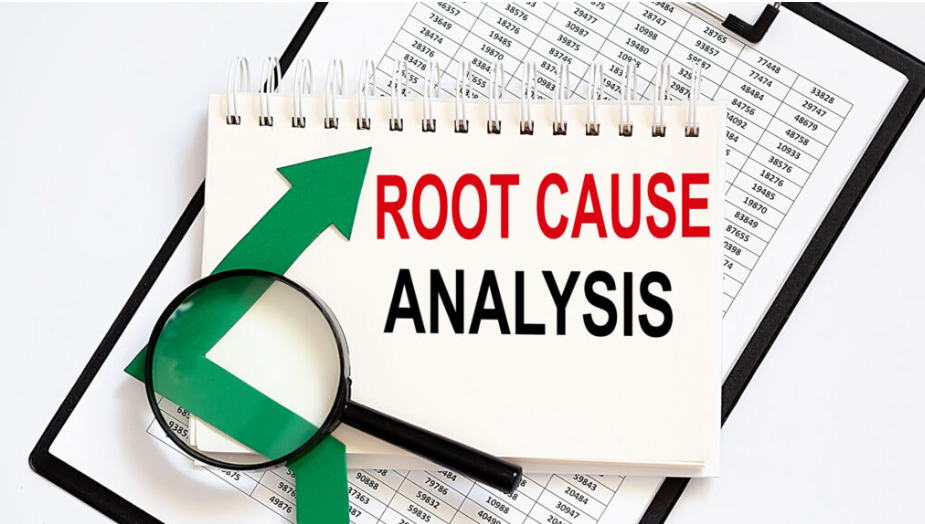Introduction to Root Cause Analysis
Root cause analysis is a systematic approach to problem-solving that focuses on identifying the underlying cause of a quality issue, defect, or process variation. By targeting the root cause rather than just addressing the symptoms of a problem, organizations can implement long-term solutions that improve product quality and process efficiency. The root cause analysis process typically involves clearly defining the problem, collecting and analyzing relevant data, identifying the root cause, implementing corrective actions and monitoring the results.
Why is Root Cause Analysis Important?
During a root cause analysis, it’s important to distinguish between causal factors that directly contribute to the issue and any secondary factors that may exacerbate the issue but are not the primary cause. Making this distinction will help you take corrective actions that are both effective and efficient. By incorporating inspection and testing, statistical process control, and root cause analysis into your quality control processes, you can identify and tackle quality issues at their source to implement lasting solutions and prevent future problems.
It may be related to a health and safety incident, an environmental incident, or a business process problem. The whole purpose of root cause analysis is to get to the underlying contributing factors, the true reasons why the error occurred. Many companies see a quick fix as the route to solving a problem. However, history has shown us that these problems often reoccur, and using this type of methodology is a great way of getting to the true understanding of the problem.
What are the Principles of Root Cause Analysis?
A core competence necessary for delivering this type of insight is the ability to identify first and foremost the need to do a root cause analysis. An integrated management system is a great way of demonstrating and it’s a great way of communicating the way we do business in our workplace. Root Cause Analysis is a form of evaluation and various teams can do it and often should be led through a protocol and it must involve heavy communication and engagement and it’s important that recommendations and support come from top management in the organization to understand the methodology and why it’s been put in place.
The principles of root cause analysis are really about aiming corrective actions at the root cause, being more effective than treating the symptoms of the problem. To be effective root cause analysis must be performed symptomatically and conclusions backed up by evidence, not looking at something with blinkers and believing you understand that this was exactly what happened.
Step-by-step Guide to Problem Solving Business
Here’s the guide for effective problem-solving business through Root Cause Analysis-
- Gather data and evidence from various locations as required to ensure that you back up and have the evidence to support that you have defined exactly what the problem is. Then look at identifying issues that contribute to the problem. Find the root causes, and identify which causes to remove or change so that you can prevent repeated problems.
- Develop solutions and recommendations that effectively prevent the repeating of the problem. Once you know what the contributing factors are then you can develop solutions. Implement these solutions, recommendations and changes following possibly change management protocol for example.
- Observe the recommended solutions and changes to ensure you understand that they have worked, and ensure you know their effectiveness and whether have they eliminated the problem. Thinking about a symptom approach versus a root cause approach. A symptom approach is often what you see quite quickly.
- Errors are often the result of worker carelessness. Organizations need to train and motivate workers to be more careful. You don’t have the time or resources to get to the bottom of this problem so first train people and re-emphasize the problem.
- Looking at the root cause then you have to think about what are the contributing factors. Errors are the results of defects in the system. People may only be part of the process.
- Organizations need to find out why this is happening and implement mistake-proof so it won’t happen again. Not necessarily just relying upon that communication with humans. If it’s critical, firms need to fix it for good or it will come back and ultimately burn us, costing us time, effort and money.
So it is a requirement to invest in this type of methodology. It is a requirement that organizations understand the benefits of it and why you would want to invest in it and ultimately you want to be able to present back to the organization a return on that investment. Proper control, monitoring and measurement of data will provide that.
How Root Cause Analysis is Effective to the Business?
Root cause analysis is a method to focus our efforts on the true causes of escapes or problems so that the organization can ultimately prevent their reoccurrence. It helps us reduce errors, and frustration, maintain customer satisfaction, and reduce costs if done correctly. It’s really important from a cultural point of view in an organization to recognize that each problem is an opportunity. Human factors are the main contributing factors to an issue. Hence, It is important to recognize that these actions may be the consequence of other cultural activities. They may be the consequence of individuals, their mental health state, and conditions going on outside of work so it is important to recognize it as well because it is equally crucial and effective from the business point of view.
What are the Benefits of Root Cause Analysis?
- One of the primary benefits of root cause analysis is that it leads to long-term solutions. By identifying the root cause, organizations can implement changes that prevent the issue from happening again. This not only saves time but also reduces costs associated with repeated problems.
- Another advantage is improved efficiency. When teams understand the real issues at hand, they can focus their efforts on solving those specific problems. This targeted approach minimizes wasted resources and streamlines processes, allowing for better productivity.
- Root cause analysis promotes a culture of continuous improvement. When organizations regularly practice this method, employees become more engaged in problem-solving. They learn to think critically about issues and contribute to finding solutions which can lead to a more proactive work environment.
- This analysis can enhance communication within teams. By discussing the root causes of problems, team members can share their perspectives and collaborate more effectively. This open dialogue can strengthen relationships and improve overall team dynamics.
- Root cause analysis can lead to better decision-making. With a clear understanding of the factors contributing to a problem, leaders can make informed choices that align with the organization’s goals. This strategic approach can drive success and foster growth.
Bottom line
Root cause analysis is a powerful tool that offers numerous benefits, including long-term solutions, improved efficiency, a culture of continuous improvement, enhanced communication and better decision-making. By implementing this method, organizations can tackle problems at their source and create a more effective and resilient environment.






